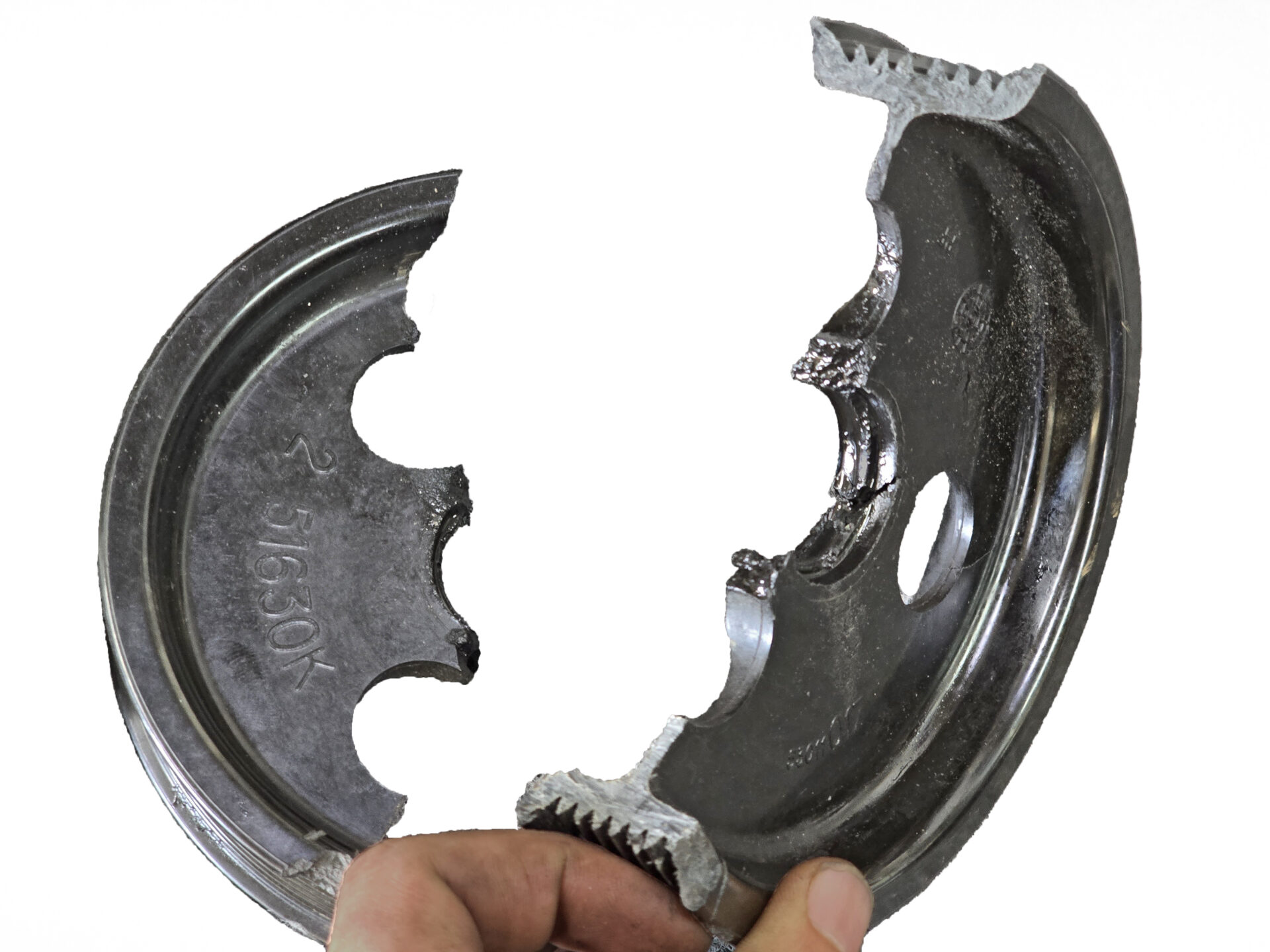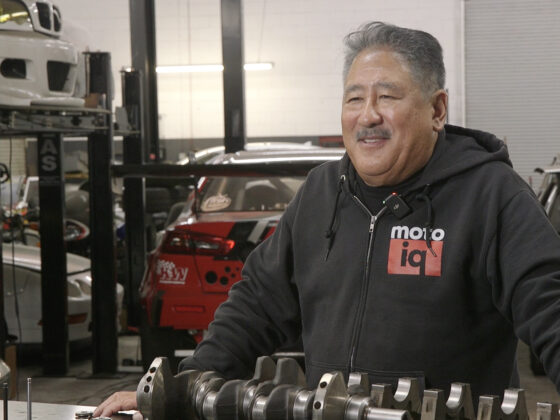 When it came to install the IPSCO billet pulley hub, we did not have the recommended .070-.100 (+/- .010”) clearance from the hub to the housing.
When it came to install the IPSCO billet pulley hub, we did not have the recommended .070-.100 (+/- .010”) clearance from the hub to the housing.
 In order to get this clearance (as pictured), we had to flip the hub 180* (from what is pictured), use washers the same diameter as the inner race of the bearing between the pump and the hub, and while a screwdriver was inserted into the hub (to keep tension off the shaft), insert and turn the allen-head bolt to tighten against the hub and pull the shaft out of the housing. This took 3 people and was not easy. But once we did this and had the desired gap, the rest of the installation was quite easy.
In order to get this clearance (as pictured), we had to flip the hub 180* (from what is pictured), use washers the same diameter as the inner race of the bearing between the pump and the hub, and while a screwdriver was inserted into the hub (to keep tension off the shaft), insert and turn the allen-head bolt to tighten against the hub and pull the shaft out of the housing. This took 3 people and was not easy. But once we did this and had the desired gap, the rest of the installation was quite easy.
 This is an image taken from the IPSCO instructions that show the use of a screwdriver as a wedge to open the hub so it can be installed onto the power steering pump shaft.
This is an image taken from the IPSCO instructions that show the use of a screwdriver as a wedge to open the hub so it can be installed onto the power steering pump shaft.
 Once the hub was set, the IPSCO billet aluminum pulley bolts onto the hub with 3 bolts, then the 3 OEM bolts mount the power steering pump assembly on the new IPSCO Billet Aluminum Mounting Bracket, and the high and low pressure lines are re-connected.
Once the hub was set, the IPSCO billet aluminum pulley bolts onto the hub with 3 bolts, then the 3 OEM bolts mount the power steering pump assembly on the new IPSCO Billet Aluminum Mounting Bracket, and the high and low pressure lines are re-connected.
 We selected the OEM Mopar serpentine belt for our Viper (P/N: 4763795AD)
We selected the OEM Mopar serpentine belt for our Viper (P/N: 4763795AD)




6 comments
Wow, it is unbelievable that such a critical part is made of plastic! This is a must-have for any Viper broken or not.
Not that big of a surprise given that this is a Chrysler product.
Thanks for the update, Billy. What other plans do you have for this beast? It is your personal street car?
Have you pinned the crank pulley yet?
Suddenly I’m glad none of my 30+ year old project cars have power steering!
Wow they were REALLY desperate to shed weight on these cars, huh?